raybet官网
2019暑期美国哈佛大学生物医学研学夏令营日志
Day 3:课程初体验
雨夜,凌晨一时,我们终于赶到了波士顿。本以为奔波劳累了一天外加受时差折磨的大家可能都无精打采,然而看到来到教室的同学们眼中闪烁着对知识的渴望,我们便知道这将是不同寻常的一天。
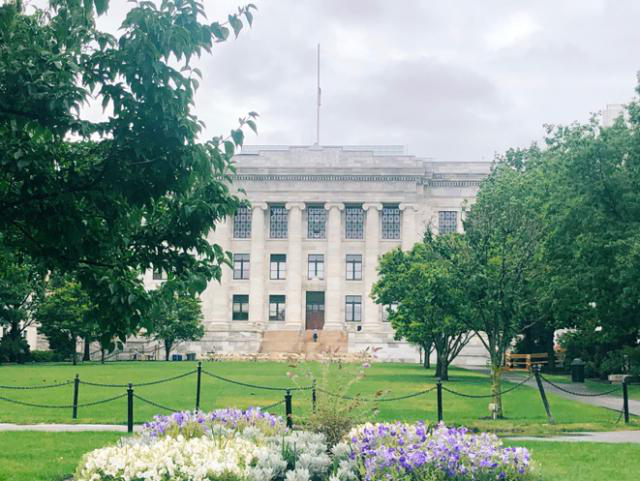
在伊曼纽尔学院的食堂中我们品尝了美式早餐,享用完刚出炉的吐司,外焦里嫩的培根配上一杯醇香的咖啡的绝妙搭配后,我们便来到了哈佛医学院,开启了我们的哈佛第一课。
给我们上第一节课的是来自哈佛医学院和布列根妇女医院的Larissa教授和汤亚清学长。他们首先介绍了美国的医保机制以及一些实行的具体做法,紧接着便带领我们就美国医疗费用支付和保险的问题展开了深入的讨论。课堂上,他们详细地介绍了奥巴马关怀法案,包括该法案的优势和弊端。同时,Larissa还介绍了许多健康服务信息传递的创新模型,与大家分享自己在医疗体系建设上的体会与见解。
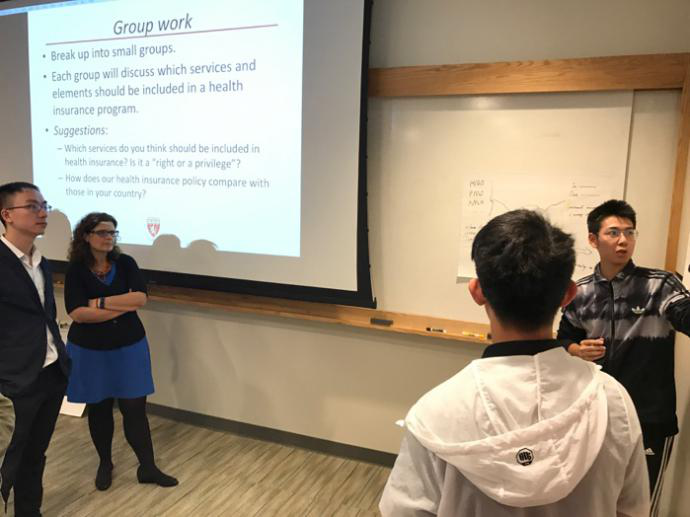
在课堂中我们还参与了一次小组讨论,论题是关于“在美国医疗保险系统中,你认为还应该添加什么服务与内容来让它更加完善?”以及“美国的医保制度相对于你所在的国家有什么异同之处?”七个小组在经过一番激烈的头脑风暴后,从不同的角度剖析了医疗保险系统的定位以及其应解决的问题,并且各自给出完善方案。
对于我们来说,小组讨论不仅是一个集思广益、锻炼思维的学习方式,同时也是一次锻炼自身听力理解和口语表达能力的舞台。无论是在陈述己方观点和逻辑链条时,抑或是向教授提出相应问题时,我们的英语能力都得到了一定程度上的锻炼。
下午2点,David Bates教授与我们一起分享有关他的职业生涯规划的的故事。在相应的纯学术知识之外,他还强调了在科研路上寻找到同伴的重要性。David Bates教授这番话不仅对我们将来找到最适合自己职业发展的方向提供了借鉴之处,还提醒了我们在学术之外要多多学习一下为人处世之道。
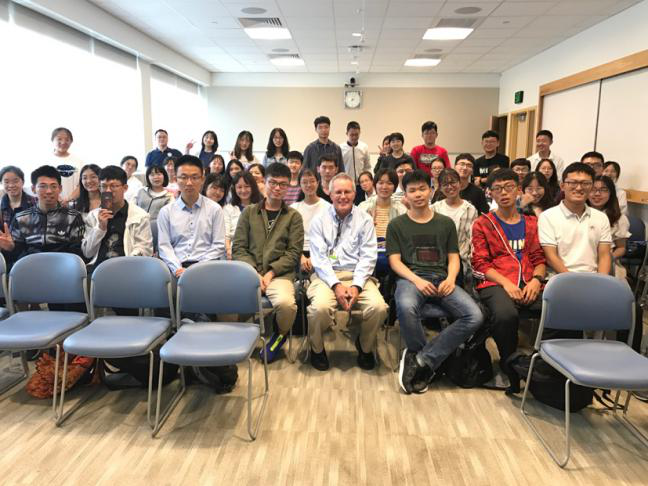
在此之后,我们参观了著名的丹娜法伯癌症研究中心。与其说它是研究中心或是医院,不如说更像是一所疗养院。带领我们参观,并为我们细心讲解的志愿者是一对精神矍铄的老夫妇。老奶奶原本是一位癌症患者,她曾在十五年前在丹娜法伯癌症研究中心接受过八个月的治疗。当她在丹娜法伯癌症研究中心治疗康复之后,她便主动加入到这里的志愿服务中来。
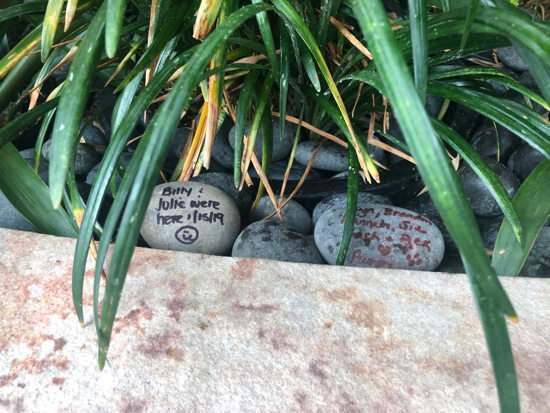
研究中心的设施无所不包:能够缓释病人内心压力的祷告间、四季如春的室内花园、研究中心历史博物馆以及写有病人家属的关怀与激励的留言墙……在一楼的商店中,因治疗而失去头发的患者可以为自己挑选一顶合适的帽子。与国内纯白色调的医院不同的是,丹娜法伯癌症研究中心的内部是原木色调,再加上随处可见的艺术作品,这仿佛不是一个癌症研究中心,而你仿佛忘却了疾病给人们带来的痛苦。怀着无比崇敬的心情,我们在感叹其资金投入的充分与研究的高端之外,也感受到了其对于癌症患者深深的人文关怀。
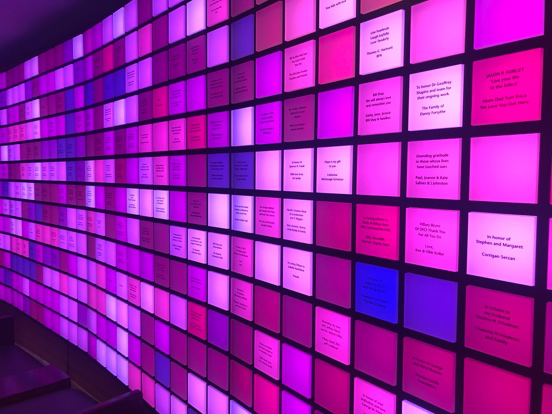
这对我们有很深刻的启发。像丹娜法伯癌症研究中心这样在医治患者的同时真切地关怀患者心理的医院,在我们国内十分少见。很多患者在确诊癌症后既承受着生理上的痛苦,又承受着心理上的压力。美国医生特鲁多的墓志铭上这样写道:“有时去治愈,常常去帮助,总是去安抚。”医者仁心,所能做的绝不仅是治愈。我们何不探索一种更加温情的方式,让癌症患者有尊严、充满希望地度过每一天呢?
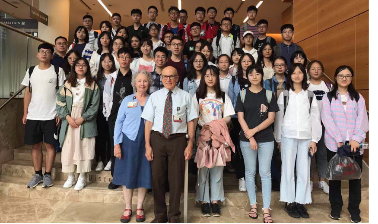
On a rainy night, at one o'clock in the morning, we finally arrived in Boston. I thought that everyone who was tired of running for a day and suffering from jet lag may be listless. However, when the students who came to the classroom flashed their desire for knowledge, we knew that it would be an unusual day.

In the cafeteria of Emmanuel College, we tasted the American breakfast, and after enjoying the freshly baked toast, the exquisite Benedictine bacon was paired with a cup of mellow coffee, we came to Harvard Medical School and opened it.
Our Harvard first class was given to Professor Larissa and Tang Yaqing from Harvard Medical School and Brigham and Women's Hospital. They first introduced the US medical insurance mechanism and some specific practices, and then led us to conduct in-depth discussions on the issue of medical expenses and insurance in the United States. In class, they introduced the Obama Care Act in detail, including the strengths and weaknesses of the bill. At the same time, Larissa also introduced many innovative models of health service information transmission, sharing their experiences and insights on the construction of medical systems.

In the classroom we also participated in a panel discussion on “What services and content should you add to make it more perfect in the US health insurance system?” and “The US health care system is relative to your country. What are the similarities and differences?” After a period of intense brainstorming, the seven groups analyzed the positioning of the medical insurance system and the problems it should solve from different angles, and each gave a perfect solution.
For us, group discussion is not only a way of brainstorming, exercise thinking, but also a stage to exercise your listening comprehension and oral expression skills. Whether in presenting our own views and logical chains, or when asking questions to professors, our English skills have been exercised to some extent.
At 2 pm, Professor David Bates shared with us a story about his career planning. In addition to the corresponding pure academic knowledge, he also emphasized the importance of finding a companion on the scientific research road. Professor David Bates's remarks not only provide us with a reference for finding the best direction for my career development, but also remind us to learn more about the world.

After that, we visited the famous Dana Farber Cancer Research Center. Rather than being a research center or a hospital, it is more like a sanatorium. The volunteers who led us to visit and explained for us carefully were a couple of old spirited couples. The old grandmother was originally a cancer patient. She had been treated for 15 months at the Dana Farber Cancer Research Center 15 years ago. When she was treated and rehabilitated at the Dana Farber Cancer Research Center, she volunteered to join the volunteer service here.

The facilities of the research center are all-inclusive: a prayer room that can relieve the patient's inner pressure, an indoor garden in the spring season, a history museum in the research center, and a message wall with care and encouragement for the patient's family... in the store on the first floor. Patients who lose their hair due to treatment can choose a suitable hat for themselves. Unlike the domestic pure white tone hospital, the interior of the Dana Farber Cancer Research Center is a log of wood, plus art works everywhere, which seems to be not a cancer research center, and you seem to have forgotten the disease to bring people The pain that comes. With great reverence, we are lamenting the full investment and high-end research, and we also feel the deep humanistic care for cancer patients.

This has a profound inspiration for us. Hospitals such as the Dana Farber Cancer Research Center, which care for patients while caring for patients' psychology, are rare in our country. Many patients suffer from both physical pain and psychological stress after the diagnosis of cancer. The American doctor Trudeau’s epitaph wrote: “Sometimes go to cure, often help, always to appease.” The medical practitioners can do more than cure. Why don't we explore a more warm way to let cancer patients live with dignity and hope?
